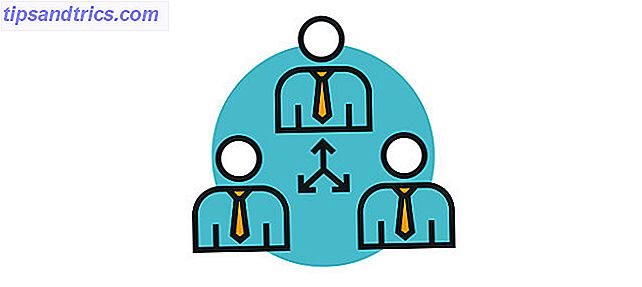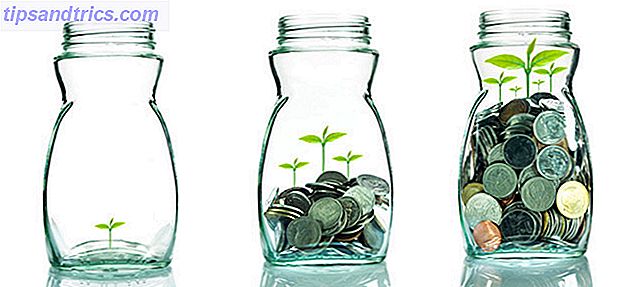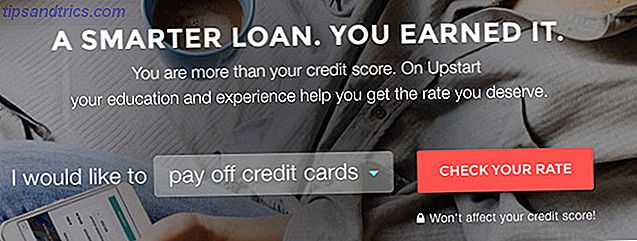What You Need to Know About Peer-to-Peer Loans
- Taille du texte: Agrandir Réduire
- Lectures : 27908
- 0 commentaires
- Notifications
Internet has made peer lending a possibility for almost everyone, but is it a good idea? Here's what you need to know before borrowing or lending.
There are two ways to approach peer lending (P2P): as a borrower or as a lender. But no matter who you are, there are a number of distinct benefits you can take to strengthen your current financial situation and future that will help you Saving money and getting out of debt.
Of course, there are also some pitfalls that can consume you, so you have to be careful. P2P loans can lead to prosperity or lead to ruin. It's a double-edged sword that one can not be wary of.
But as long as you are aware of the risks and avoid some common mistakes, everything will be fine. Here is everything you need to know.
What is peer-to-peer lending?
The P2P loan is like an eBay for loans. It's a very crude analogy, so let's expand on that a bit.
eBay is an open market that allows buyers and sellers to gather in one place and exchange goods, while avoiding the need for a retailer. In other words, eBay is the online platform that facilitates the purchase and direct sale of goods between people.
The P2P loan is very similar, which is why it is sometimes called "market loan". Instead of applying for a loan from a financial institution such as a bank, a credit union or a government, you can apply for a loan. me - hence "peer-to-peer".

The current logistics is a little more complicated than that, but still simple enough that everyone can jump online and apply for a loan in minutes.
As a borrower, all you need to do is complete a quick online application, which involves a credit history check (a "soft" survey) and an explanation of why you want the loan . Depending on these factors and some other factors, an interest rate will be assigned to you and your loan application will be registered in the market.
As a lender, you will be able to navigate the market for loan applications. Each loan application will provide you with relevant information about the borrower (eg, income, credit history, loan reason) and if you wish, you will be able to finance part of the loan application - or any , if you wish. As the loan is repaid, you will receive payments in proportion to the amount invested.
Is the peer-to-peer loan right for you?
P2P loans are not suitable for everyone. Is this a viable option when you need a quick personal loan? Yes. Is this a feasible way to invest your extra money and potentially make big returns? Yes. But are the risks worth it? Well, let's explore the pros and cons of both sides.
The advantages and disadvantages of borrowing
One of the main advantages of going the P2P loan path is that interest rates tend to be lower than what you can get, for example, a bank. While a personal loan can have a 12-20% interest rate from a financial institution (which is still much lower than a credit card), a P2P loan can have as little as 5% with good credit.
Another huge benefit is that the application process is much less formal than a traditional loan. You do not need as much documentation, credit checks are "soft" rather than "hard", and even if you have bad credit, you can explain why. In addition, you can get a loan for any reason as long as there are lenders who will invest.

Finally, P2P loans are not guaranteed, which means that there is absolutely no guarantee required. This makes it a safer option than underwriting, a second mortgage, a home equity line of credit or a secured credit card. Loans are distributed solely based on your credit worthiness.
One of the best ways to use this borrower is to consolidate a bunch of high interest rate loans under a single P2P loan, which can save you hundreds or even thousands of interest over several years.
But not everything is sun and rainbows.
Interest rates for P2P loans are skyrocketing as your creditworthiness declines, to the point where you may have to pay more interest than a credit card (again, if you are at this point you are probably not eligible for credit cards). The highest interest rate at the Lending Club, for example, is 31%.
If you are late on payments, the fees can be significant - and if you do not meet your loan, the collection costs are out of this world. P2P loans also tend to favor shorter durations because interest rates tend to increase with longer demands. Terms over five years are rare.

And do not expect guaranteed funding. In 2014, Lending Club and Prosper claimed that less than 10% of their loan applications were actually funded.
Privacy is another concern. Although reputable markets will not expose your most sensitive details, you should always be wary of the details that are presented to the public, especially the lenders who scour the loan applications.
Now here's the thing: if you're in the habit of getting into debt you should really avoid P2P loans altogether. Debt is a debt, and if you do not have control over your finances right now, P2P loans will most likely result in a deeper drop in the hole.
The advantages and disadvantages of the loan
The real question that many people have when they hear about P2P lending for the first time is why would anyone give money to strangers for pennies on the dollar? It all boils down to a return on investment .
In recent years, P2P smart lenders have recorded average returns in the range of 6 to 12%. In the grand scheme of things, it's damn good. If you diversify and lend $ 10,000 to P2P borrowers, that's $ 600 to $ 1,200 a year in passive income - and not only do most lenders invest more than that, but some have even had better returns, up to 15%.
On the other hand, you can stick your money into an online savings account or you can park in long-term investments like an index fund and earn an average return of 6-8%, but with more large year-to-year fluctuations than P2P loans.
You will need a lot of money to argue it, but P2P lending can be a great way to diversify. Divide your resources across the spectrum, from high-risk, high-yielding borrowers to low-risk, low-yielding borrowers, and you'll be doing well.
But of course, there are some disadvantages to consider.
First, P2P loans are illiquid. The beauty of a savings account is that you can withdraw your money at any time - but once you've invested in a P2P loan, it's hard to pull your money on a whim. (Again, this is true for most types of long-term loans and investments.)

The other main risk is that borrowers will default. The good news is that services like Lending Club and Prosper have survived the 2008 recession, and if there ever was a time when widespread faults would have killed the P2P movement then it was.
However, when loans are in default, it is usually your responsibility to collect late payments, which can be time consuming. In addition, if the borrowers go bankrupt, you will have to eat the loss. (Most reputable sites may offer protection against this, but only up to a specified limit.)
And do not forget the taxes Yes, you must pay taxes on eBay sales and Craigslist Yes. Dividends are counted as regular income, so even if your nominal yields may look good, the numbers will not be as attractive once you factor in taxes. And while it's possible to cancel defaulted loans, you'll have to depreciate them individually - a potential pain in your neck when you've diversified hundreds of borrowers.
Get started with peer-to-peer loan
Still interested? Awesome! The truth is that despite all the risks involved, many people leave happy with the P2P loan experience - not everyone, of course, but a decent percentage. If not, how could the P2P lending industry be 10 years old and stronger than ever?
If you want to dive, whether as a borrower or lender, here are the top three American sites that we recommend.
1. Lending Club

Lending Club is the most well known platform for P2P loans, going so far as to claim to be America's # 1 credit market. He was not the first on the scene, but he played a crucial role in bringing P2P loans to the masses. One could argue that P2P loans might not even be around today if it was not for Lending Club.
Personal and commercial loans are available at MyInstantOffer, each beginning at minimum amounts of $ 1,000 and $ 15,000 and up to maximum amounts of $ 40,000 and $ 300,000, respectively.
Consider that it has lent more than $ 11 billion since its inception, and add to that the fact that it was made public in 2014. If that does not inspire you trust, the Lending Club is a robust platform with a bright future ahead of him, I'm not sure what it's going to do.
2. Prosper

Prosper was the first true P2P lending service in the United States and continues to be one of the industry's leading platforms. Having lent more than $ 6 billion since its inception, Prosper has a long history and a promising future.
Personal and commercial loans are available from a minimum of $ 2,000 to a maximum of $ 35,000. The terms of the loan must be three or five years. There are no other options to date.
3. Upstart

Launched in 2012, Upstart is one of the youngest players on the field - but it was co-founded by two former Google employees, which gives a lot of credibility. The only thing about Upstart is that your credit worthiness is actually determined by your education and experience, not your credit score.
Personal and commercial loans are available from a minimum of $ 1,000 to a maximum of $ 50,000. The terms of the loan must be three or five years. There are no other options to date.
Due to the lack of focus on credit scores, Upstart is extremely popular among those in their twenties and thirties. Many of these young people have not been able to build a solid credit history, but have the means and willingness to repay the money lent.
Is the peer loan worthwhile?
This can be, under the right circumstances.
If you are drowning in high interest debt and want some respite, you can take out a P2P loan with a lower interest rate and save money in the long run. If you need money and can not get a traditional personal loan, a P2P loan can be a great option. If you want to go to school but can not get financial aid.
But if you plan to get a P2P loan for the needs and not the needs , then we do not recommend. If you are prone to debt accumulation and wild spending, do not get P2P loan.
If you are an investor, P2P lending can be an effective way to diversify beyond stocks, bonds and real estate. It does not require much effort, the risk is what you make of it, and the returns are moderate to good. Just remember to treat it as an illiquid and long-term investment.
Have you ever considered lending P2P as a borrower or lender? If you have already participated, we would like to know how it went. Would you recommend it or not? Share your thoughts and experiences with us below!

